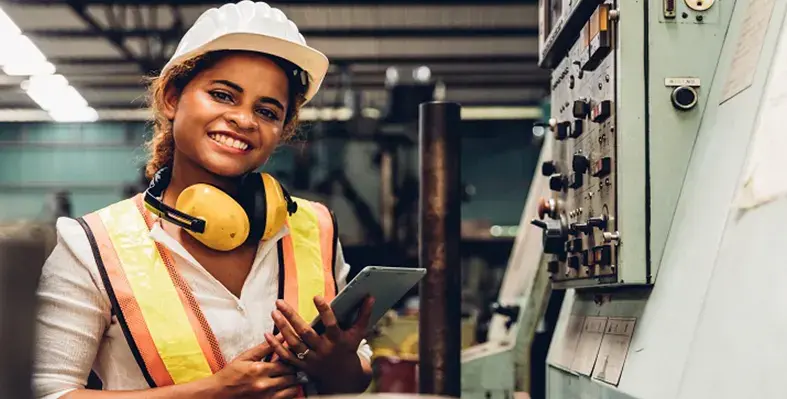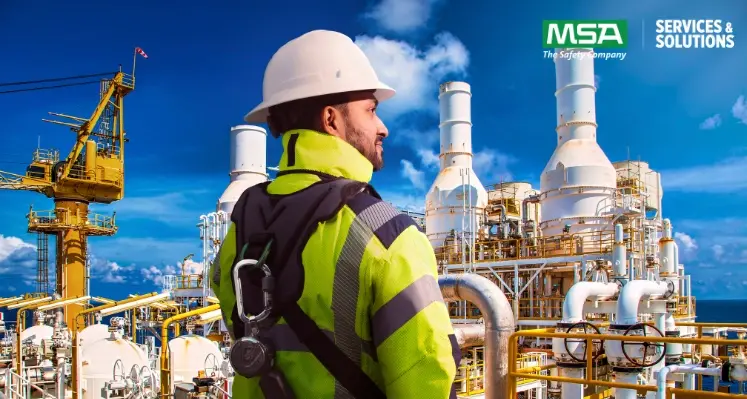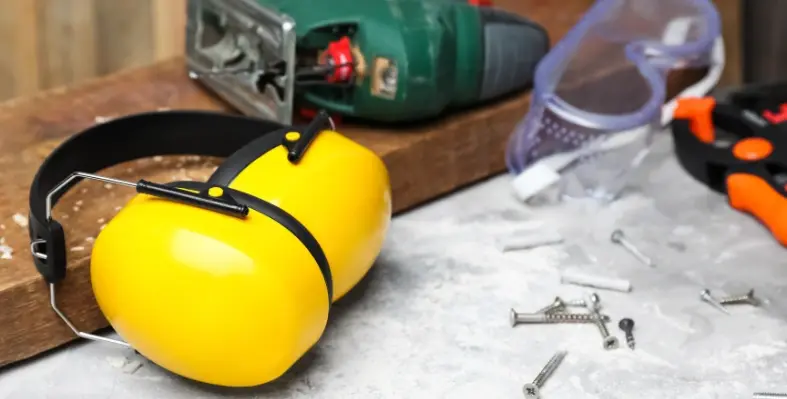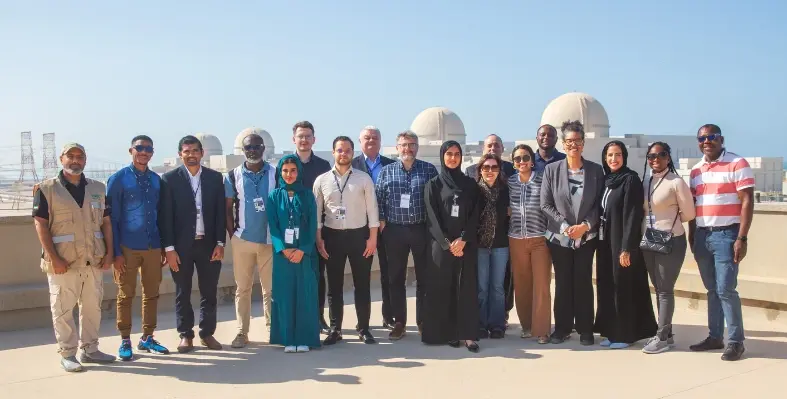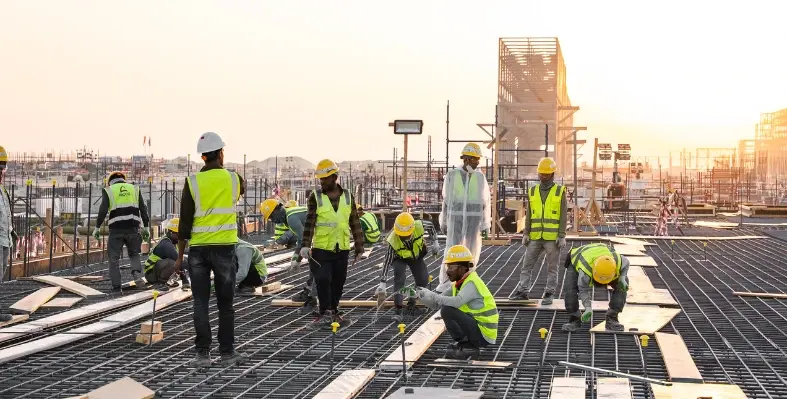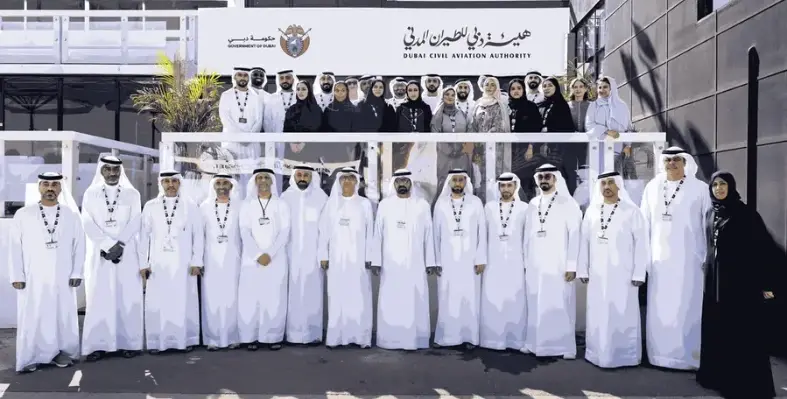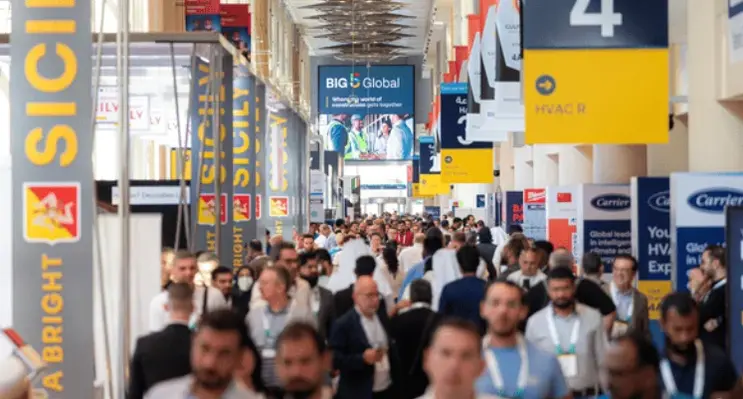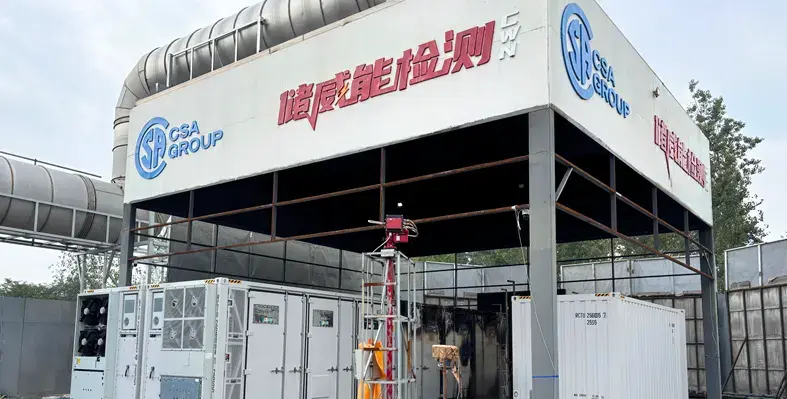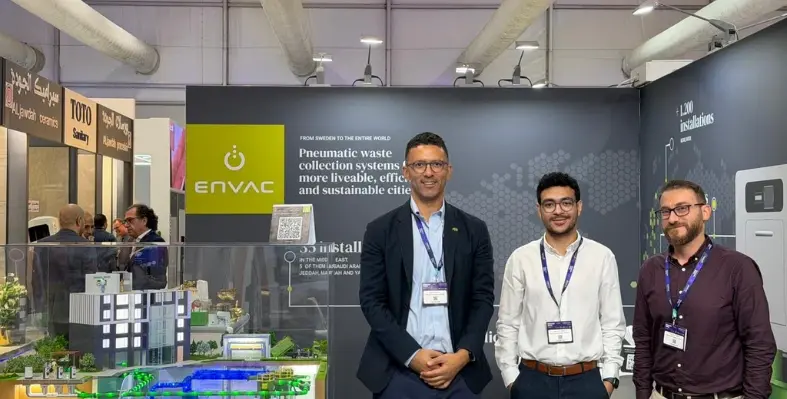Industrial Insights
Industrial Insights
- Details
- Louise Waters
- Industrial Insights
- Topic: HSE
- Date: 3 Deccemebr 2025
- Year: 2025
MSA Safety, a global leader in safety solutions, has launched the Gas Detection Hub, a new digital knowledge platform designed to help safety professionals move beyond reactive risk management and create a proactive, insight-led safety culture
The Hub provides a central destination for expert insight, practical resources, and the latest thinking in gas detection technology. Aimed at safety managers, operational leads, engineers, and decision-makers across key industries, it is free to access with a simple one-time registration. New content is added regularly so that professionals always have access to fresh, relevant information aligned with the latest developments in gas detection and safety.
“The Gas Detection Hub was built with one clear objective: to help safety professionals make informed decisions in high-risk environments by giving them the tools, knowledge, and confidence to enhance worksite safety” said Danny Stranks, MSA Safety Connected Sales Manager. “From real-world case studies to in-depth whitepapers and technical explainers, the Hub offers content that’s not only insightful but also offers the clarity and perspective to help you navigate complex changes.”
The Gas Detection Hub includes:
∙Expert blogs and leadership insight
∙Product information and application guidance
∙Customer stories and case studies
∙On-demand video explainers
∙Industry whitepapers
∙Updates on the latest safety standards and connected technologies
Global reach, local relevance
The Gas Detection Hub is accessible worldwide, with content tailored to regional needs and industry priorities. Whether working in oil and gas, utilities, manufacturing, or any sector where gas detection is important, the Hub serves as the go-to destination for education, expert advice, and connected safety innovation.
To sign up to the Hub, click here.
- Details
- Louise Waters
- Industrial Insights
- Topic: HSE
- Date: 2 December 2025
- Year: 2025
The Women in Safety Leadership (WiSL) programme, created by L’Oréal and delivered with RoSPA, Nike, Inc., and Leaderlike Ltd, has just won Most Innovative Institute Approved Programme at the Institute of Leadership Awards 2025
The Women in Safety Leadership (WiSL) programme empowers women to take leadership roles in health and safety, promotes diversity and inclusion through addressing the longstanding gender imbalance in the OSH workforce where only 30% of professionals are women, and ultimately makes workplaces and wider society safer.
Based around three core themes – Leadership by Design, Leadership in Action and Leadership as a Strategy – the training element was updated by Leaderlike Ltd and L’Oréal in 2023 and is delivered by global safety leadership specialist and Leaderlike Ltd founder Karen J Hewitt.
WiSL provides a safe, collaborative space where women from diverse industries can explore their leadership potential and develop their ability to influence across organisations.
Following the initial training session, participants are matched with a mentor to support their continued leadership journey. Participants also become part of the WiSL Alumni Network, enabling them to share advice, develop new skills and work together to inspire the next generation of female health and safety leaders.
More than 100 women have progressed through WiSL since the programme’s launch in 2023, with participants drawn from over 20 countries and a wide range of sectors including construction, utilities and shipping.
Baroness Crawley of Edgbaston, RoSPA vice president and consumer safety champion said, "This prestigious award represents well-deserved recognition for everyone at L’Oréal, RoSPA, Nike, Inc. and Leaderlike Limited, who have all come together to share their passion and expertise to empower women to lead in health and safety – at work, at home, and beyond. Most importantly, it is a testament to the dedication and energy of all of the inspiring women who have participated in the Women in Safety Leadership, and their commitment to developing skills not just for the benefit of their own careers, but to ensure others can work and live their lives free from the risk of accidental harm.’
- Details
- Sania Aziz
- Industrial Insights
- Date: 28 November, 2025
- Year: 2025
Saudi Arabia’s Vision 2030 places people at the heart of its transformation, building safer, more sustainable workplaces is central to achieving this ambition. As industries expand and evolve, the demand for skilled, well-trained workforces has never been greater.
For over a century, MSA Safety has been protecting workers worldwide. In Saudi Arabia, it supports organisations by delivering world-class training programmes that go beyond compliance to embed a true culture of safety.
MSA recognises that equipment alone is not enough, workers must also be confident and competent in how to use it. That is why its certified training courses blend expert instruction with practical experience, helping employees, supervisors, and trainers build lasting skills they can apply every day.
Delivered locally by experienced professionals, MSA’s training covers a wide range of safety-critical areas, including:
• Fall protection and working at height
• Confined space entry and rescue
• Spill prevention and containment
• Gas detection and monitoring
• Respiratory protection
• Lock-out/Tag-out procedures
• First aid and emergency response
Each programme is aligned to international standards and designed to strengthen workforce capability while reducing operational risk.
By making high-quality training accessible in Saudi Arabia, MSA is helping organisations align with Vision 2030 goals - protecting workers, supporting compliance, and building safer, more resilient industries for the future.
Equip your teams with the skills they need to work safely and confidently. To find out more or register for On-Site Training, visit our website.
- Details
- Sania Aziz
- Industrial Insights
- Date: 28 November, 2025
- Year: 2025
FireBull AB, a next-generation fluorine-free firefighting foam developed by Enforcer One and distributed in the region by Frontline Innovations, has become the first and only foam globally to achieve certification to the NTA 8133 lithium-ion battery fire standard.
Independent testing confirmed that FireBull AB can extinguish lithium-ion battery fires in just 16 to 20 seconds, with no reignition for over 20 minutes, representing a significant advancement in safety for industries including electric vehicle infrastructure, battery logistics, energy storage, warehousing, and marine operations.
“This certification confirms that lithium-ion battery fires can now be suppressed safely, rapidly, and without environmental compromise and sets a new global standard for safety, compliance, and environmental responsibility,” said John Kneller, Director of Frontline Innovations.
FireBull AB is the only fluorine-free foam approved by the UAE Civil Defence and is fully PFAS/PFOS-free, removing harmful fluorinated chemicals associated with global environmental litigation and ESG liabilities. It is effective at just 0.25% concentration and is rated for Class A, B, D, and K fires, offering broad applicability across sectors.
Key features
The foam is compatible with all existing fire suppression systems, allowing immediate integration without upgrades or replacements. For rapid deployment, FireBull AB can be used with Enforcer One’s portable CAFS units, including the Enforcer Air 3, a compact system that can be worn or carried by hand. For larger operations, the Enforcer 10, 30, and 60 units can be mounted on vehicles, trucks, or ATVs, making the foam ideal for remote sites, forecourts, and dynamic industrial environments where every second counts.
With lithium-ion battery fires becoming increasingly frequent and severe, the certification has direct implications for insurance risk, regulatory compliance, and legal liability. Using uncertified or outdated suppression systems in battery-rich environments could jeopardize insurance claims and expose organisations to reputational or legal risks.
Frontline Innovations urges all operators handling or storing lithium-ion batteries to review their fire suppression infrastructure in light of this new global benchmark. A regional demonstration of FireBull AB in action will soon provide organisations the chance to see certified lithium-ion fire suppression first-hand and evaluate its operational advantages.
- Details
- Sania Aziz
- Industrial Insights
- Date: 27 November, 2025
- Year: 2025
Safety culture is becoming a key strategic advantage for Middle East business leaders, according to the Institution of Occupational Safety and Health (IOSH). In a region known for ambitious giga projects, safety goes beyond accident prevention; it is now linked to resilience, performance, and competitive positioning.
IOSH is urging organisations across the Middle East to treat safety as a strategic asset rather than a back-office requirement. Its new white paper, Safety culture comes of age: empowering people, strengthening resilience, elevating performance, sets out a framework for embedding safety, health, and wellbeing at the core of corporate strategy. Central to this approach is the Business Assurance Certification (BAC), which helps companies assess and mature their safety culture while aligning it with governance, ESG goals, and workforce wellbeing.
Angela Gray, IOSH Technical Lead, said, “Safety culture is now a driver of performance and resilience. Our model empowers leaders to align safety with business goals, build resilience, and demonstrate their commitment to their people and ESG excellence.”
The BAC framework focuses on governance and leadership, systems and processes, and people and culture. Organisations can perform self-assessments using the Business Assurance Tool and pursue independent certification ranging from bronze to platinum, providing external validation that increasingly influences tenders and investor confidence in a market where transparency and ESG reporting are critical.
Global trials with 120 organisations, including major construction firms, revealed that most are in the early stages of safety culture maturity. However, the BAC framework immediately fostered cross-functional discussions and renewed investment in workforce wellbeing. IOSH stresses that this approach goes beyond compliance: integrating safety into strategy enhances resilience, encourages innovation, and signals serious ESG commitment.
By adopting this framework, Middle East leaders can boost investor confidence through measurable human capital metrics, strengthen client and supply chain partnerships, enhance productivity and retention by fostering psychological safety, and drive financial returns by reducing incidents, lowering insurance costs, and limiting turnover.
- Details
- Sania Aziz
- Industrial Insights
- Date: 26 November, 2025
- Year: 2025
The Emirates Nuclear Energy Company (ENEC), in partnership with the U.S. Department of Energy, has hosted two specialised workshops for representatives from Ghana and Poland’s nuclear energy organisations.
Held at both the Barakah Nuclear Energy Plant and in Abu Dhabi, the sessions offered practical insights drawn from the development and operation of the Barakah facility. The workshops focused on risk informed cybersecurity for new nuclear builds, along with the fundamentals of nuclear quality, regulatory frameworks and safety culture essential for emerging nuclear programmes.
Participants engaged in two core learning streams: “Nuclear Quality for Emerging Countries” and “Cybersecurity for Nuclear Power Generation: Lessons Learned from New Program Implementation”. Together, these sessions provided hands on guidance on establishing robust governance, meeting international standards and preparing safe, secure and efficient nuclear infrastructure.
The initiative builds on ENEC’s longstanding collaboration with the U.S. Department of Energy, which was strengthened in 2020 through a Memorandum of Understanding on energy cybersecurity. It also forms a key part of ENEC’s broader strategy to advance global knowledge sharing, support countries launching new nuclear programmes and promote opportunities for international partnership and investment.
By enabling new build nuclear nations to access proven expertise and advanced technologies, ENEC aims to help partners strengthen energy security, enhance sustainability and accelerate the responsible adoption of peaceful nuclear power.
- Details
- Sania Aziz
- Industrial Insights
- Date: 25 November, 2025
- Year: 2025
The hours spent training production and maintenance teams can lead to variable results. They might just tick the boxes without providing a return on investment, or they can enhance safety, foster team building, and develop a deep understanding of the equipment that boosts efficiency and uptime.
In-class sessions should transition to on-site, hands-on training, supported by online content for access afterward. Training should be robust and encourage problem-solving using modern methods and standards. Companies that prioritise safety experience fewer safety incidents, less regulatory oversight, and higher productivity and profits.
When it comes to conveyor belts, a one-day training session can serve as a refresher, but it is recommended that staff complete a comprehensive course lasting at least two days. Conveyors are as complex as they are crucial to operations, and training should include a mix of classroom and hands-on learning, followed by a pilot programme to encourage team building and gauge results.
The problem
A commitment to safety starts at the top with corporate culture. A production-at-all-costs approach means safety concerns are always present. Bad habits and injuries often stem from three things: lack of funding, an understaffed maintenance department, and a run-till-broke mentality. Good safety habits require training and the patience for extra steps. Cutting corners and calling it efficiency can lead to serious injuries, low morale, downtime, and lost production.
Basic training
Everyone who operates, cleans, or maintains conveyors should be trained on the hazards of bulk material handling. Basic training helps staff identify problems and resolve them safely. Appropriate safety training emphasises a basic understanding of conveyor design and operation, as well as the Lock-Out Tag-Out (LOTO) procedures required for working on and around the system.
Conveyor maintenance can be dangerous even when LOTO and other safety measures are in place.
Advanced training
Over time, production demands cause conveyor belt speed and capacity to reach beyond the original design specifications. Systems are incrementally modified to minimise problems associated with the demands. Advanced conveyor design training for engineers and mechanics is critical for diagnosis and the development of updated solutions. No two conveyors are identical, so adhering to standard design methods allows a technician to make adjustments that another can recognise and understand.
Day one
A walk down problem belts before the training helps the instructor focus on site-specific problems and management expectations. The first day starts in the classroom with the class reviewing typical problems, discussing challenges, and the best practices of safely addressing them. The class identifies a couple of problem conveyors and splits into small teams. Each team examines the same problem and brainstorms solutions.
Advanced conveyor training highlights the relationship between equipment, efficiency, and safety.
Day two
The class reviews and discusses root causes, solutions, and procedures. Once the teams reach an agreement, they prepare a short presentation using the knowledge they gained. The presentations may also include an estimate of the cost of the proposed solutions. Management is then invited to listen to the team presentations, ask questions, and show a commitment to safety and communication. By making the presentations, trainees display knowledge and support for the solutions. It is critical at this step that the managers who attend the presentations have the authority to act on the proposals and are willing to commit to a pilot programme to demonstrate that theoretical results can be translated into reality.
A conveyor system with safety engineered into the design maximises efficiency and productivity.
Pilot programme
One or more conveyors from the presentation are selected for a pilot programme. Usually, the results of the pilot programme are immediately noticeable. A lapse in maintenance affects the pilot results, so extend the test period to the next scheduled shutdown, with periodic inspections and adjustments made by the equipment manufacturer.
Third-party inspection ensures the integrity of pilot results.
It is incumbent upon management to take safety and maintenance training as seriously as the staff, listen to employees' concerns, and fix the problem correctly the first time. As research has shown, companies that prioritise safety, training, and updating equipment enjoy fewer safety incidents, less regulatory oversight, higher productivity, and greater long-term profits.
The online Martin Foundations Learning Center draws on the collective knowledge and expertise gathered over more than 80 years of solving bulk-handling challenges. Aimed at apprentice technicians and experienced engineers alike, the non-commercial information is offered at no charge and is accessible by computer, tablet, or smartphone. An extension of the Foundations training curriculum, the Learning Center uses a mix of text, photos, videos, webinars, online events, and live experts available to answer questions.
This article was written by R. Todd Swinderman, President Emeritus at Martin Engineering.
- Details
- Sania Aziz
- Industrial Insights
- Date: 24 November, 2025
- Year: 2025
WakeCap, the sensor-powered project intelligence and controls platform used across major global construction and oil and gas projects, has announced its acquisition of Trackfy, a workforce safety and operational platform serving industrial companies.
The move reflects the Saudi company’s strategy to expand internationally, broaden its product capabilities, and strengthen relationships across the full construction and industrial lifecycle.
The expansion comes as global infrastructure spending accelerates, with Saudi Arabia alone investing nearly US$1 trillion in construction and urban development. In line with Vision 2030’s goals for safer, smarter and more sustainable built environments, WakeCap’s blend of Silicon Valley innovation, large-scale Saudi delivery and, now, Brazilian market access positions the company at the forefront of AI- and IoT-driven industrial transformation.
With Brazil set to serve as WakeCap’s LATAM headquarters, the acquisition extends the company’s reach beyond construction into long-term operations and maintenance. By integrating Trackfy’s industrial capabilities, WakeCap can now support clients from the build phase through day-to-day facility operations, offering a fully connected solution across an asset’s entire lifecycle. This creates significantly greater long-term value for customers.
The combined strengths of both companies will merge WakeCap’s leadership in global construction technology with Trackfy’s operational expertise. WakeCap provides live, site-wide visibility on workforce activity, safety, productivity and progress, helping protect workers and improving site reliability. With more than 150mn labour hours tracked and deployments across US$120bn worth of active projects—including Aramco, NEOM, Qiddiya, King Salman Park and international projects in the UAE, US, Brazil and Japan—WakeCap continues to set new benchmarks for data-driven performance, safety and accountability, enabling smarter decisions and lowering insurance costs.
- Details
- Sania Aziz
- Industrial
- Date: 21 November, 2025
- Year: 2025
Dubai Civil Aviation Authority (DCAA), one of Dubai’s key aviation regulators, has wrapped up its participation at the Dubai Airshow 2025 with a strong international showing that reinforced the emirate’s status as a global centre for aviation excellence and technological innovation.
The event, staged at Dubai World Central from 17-21 November under the theme “The Future Begins Here,” marked another significant step in the rapid expansion of both the aviation and space sectors.
During the Airshow, DCAA achieved several important milestones, led by the signing of two Memoranda of Understanding with Dubai Police and Dubai Customs. These agreements are designed to strengthen institutional collaboration and align efforts to uphold the highest levels of safety, security and operational efficiency across Dubai’s airspace.
The partnerships will focus on creating new frameworks for operational coordination, sharing expertise and critical information, and developing joint initiatives that contribute to long-term sector sustainability. The move aligns with Dubai’s wider ambition to build a smart, unified and future ready aviation ecosystem.
Commenting on the occasion, H.E. Mohammed Abdulla Lengawi, Director General of the Dubai Civil Aviation Authority, stated: “The remarkable success of the Dubai Airshow 2025 reflects the Authority’s firm commitment to supporting innovation and enhancing the sustainability of the aviation sector. This year’s edition provided a global platform for knowledge exchange and partnership-building, demonstrating the sector’s resilience and its ability to evolve. The Memoranda of Understanding signed by the Authority represent an important step toward a more efficient and innovative future, further strengthening Dubai’s position as a leading global centre for civil aviation. This aligns with our continued efforts to elevate operational efficiency and enhance security and safety standards across the UAE’s airspace.”
- Details
- Sania Aziz
- Industrial
- Date: 20 November, 2025
- Year: 2025
Across the Middle East, Africa and South Asia, rapid urban expansion is reshaping economies at an extraordinary pace. With the United Nations forecasting that nearly 68% of the world’s population will live in cities by 2050, Africa in particular faces surging demand for housing, transport networks and large-scale urban infrastructure
As construction activity intensifies, industry stakeholders are turning to Big 5 Global (www.Big5Global.com) to source technologies and solutions that reinforce supply chains, boost efficiency and support sustainable development.
Welcoming participants from more than 165 countries, with 70% of solutions presented by international exhibitors, Big 5 Global serves as a gateway linking the region's construction community with a worldwide ecosystem of manufacturers, suppliers and technology providers.
Strengthening supply chains for project delivery
Big 5 Global hosts 2,800 exhibitors and showcases over 60,000 products, systems and services designed to enhance the reliability of construction operations. International pavilions from Germany and Italy return with advanced building materials such as high-performance concrete, cement, marble and stone technologies. India expands its presence with innovative MEP and smart construction systems suited for large projects across the Middle East and Africa. Austria and Pakistan also rejoin the event, displaying modular building solutions, interior systems and cost-efficient MEP technologies that streamline execution. Additional exhibitors from Armenia, Croatia, Hungary, Jersey, New Zealand, Norway and Serbia further widen procurement options for buyers seeking resilient and diversified sourcing channels.
With regional demand rising, digital technologies are rapidly transforming procurement and project execution.
Technology reshaping procurement and construction workflows
At Digital Construction World, leading companies such as Autodesk, Nemetschek Group, Odoo, Premier Construction Software, Procore Technologies, RIB Software and Trimble highlight digital tools that improve transparency and coordination across supply chains. Odoo offers an integrated suite linking procurement, HR and operations, while Premier Construction Software simplifies budgeting and project management. Trimble demonstrates automated solutions that reduce site rework by up to 25%, directly improving project timelines and profitability. Meter Technology showcases its fully integrated digital platform that modernises surveying and engineering workflows by removing long-standing inefficiencies.
Ahmed Al-Ansary, chairman, founder and CEO of Meter Technology, commented, “Meter transforms surveying and engineering from traditional to tech-driven. As the world's first fully integrated digital platform, we've eliminated decades-old inefficiencies. Our AI-powered system completes complex projects within 48 hours with exceptional precision across nine countries. Big 5 Global offers the opportunity to connect with industry leaders and explore sector development worldwide under ‘From the UAE to the World’, where geospatial and engineering digital innovation forms the foundation of real estate sustainability.”
Sustainable manufacturing and advanced material innovation
Several global exhibitors are also reimagining material production, transportation and reuse to reduce environmental impact. China introduces a new Eco-Friendly Zone built entirely from recyclable materials and dedicated to low-carbon construction solutions.
Grundfos Gulf Distribution highlights high-efficiency pumping systems designed to cut water and energy consumption. Deewan Equipment Trading LLC presents modular and precast manufacturing plants that reduce onsite waste and speed up project timelines. Hitech Concrete Products showcases precast hollow-core and insulated wall systems engineered for superior thermal performance and lower material use.
GF returns with advanced MEP and sustainable building technologies that support efficient construction and environmentally conscious project delivery. "The region is pursuing one of the world’s most ambitious development programs, where sustainable water management is key to realizing this vision. GF is uniquely positioned to support this progress through its comprehensive solutions portfolio, our local presence including manufacturing, offsite-manufacturing and customer experience facilities, long-standing regional partnerships and dedicated teams who understand the market’s unique challenges," said Michael Rauterkus, executive committee member of GF and president of GF Building Flow Solutions.
These collective contributions are helping the UAE build smarter cities aligned with long-term net-zero ambitions.
“As rapid urbanisation increases demand for project efficiency, quality and delivery, the global construction landscape must accelerate efforts toward net-zero goals and cross-sector collaborations,” said Josine Heijmans, senior vice-president, dmg events. “Big 5 Global continues to connect government entities, international manufacturers and regional stakeholders, helping strengthen construction supply chains and advance sustainable growth across the built environment.”
- Details
- Louise Waters
- Industrial Insights
- Topic: Fire Safety
- Region: Europe
- Date: 19 November 2025
- Year: 2025
Wärtsilä has successfully completed three major fire safety and explosion tests for its battery energy storage system, Quantum3
The tests included UL 9540A unit-level testing, Large Scale Fire Testing, and proprietary Active Ignition Mitigation System (AIMS) testing.
The three tests were designed to simulate worst-case fire and/or explosion scenarios, providing valuable data to manufacturers, first responders, customers, and regulators. Together, they confirm Quantum3’s ability to contain thermal runaway events, prevent fire propagation, and mitigate risks associated with flammable gas build-up, ensuring safety for surrounding communities. CSA Group, a leader in standards development and in product testing, inspection, and certification, witnessed the execution of all three tests for third-party verification.
“CSA Group was pleased to support Wärtsilä’s fire safety testing programme through close collaboration between our North American and Asian teams,” said Dana Parmenter, commercial vice president, Industry, CSA Group. "The strong coordination between teams helped ensure the testing was carried out smoothly and effectively.”
Quantum3 is the most advanced addition to Wärtsilä’s Quantum battery energy storage product portfolio, offering a fully integrated AC block solution with industry-leading safety, cybersecurity, energy density, and sustainability features. Quantum3’s enhanced fire safety features exceed the requirements of current global regulations, including advanced fire suppression and next-generation thermal management.
“These results reflect years of engineering innovation and safety-first design,” said Mishaal Syed Naveed, product manager - Fire Protection at Wärtsilä Energy Storage. “By completing all three tests, Quantum3 has proven its best-in-class safety performance, giving our customers and the general public confidence that Wärtsilä systems are ready for the most demanding applications.”
Wärtsilä will continue collaborating with first responders, customers, and regulators to ensure that fire safety keeps pace with the rapid deployment of battery energy storage worldwide.
- Details
- Sania Aziz
- Industrial Insights
- Date: 19 November, 2025
- Year: 2025
Envac, the global pioneer of automated waste collection and creator of the pneumatic waste collection system used in residential developments, hospitals and airports, is set to return to Cityscape Global, which runs from 17-20 November at the Riyadh Exhibition and Convention Centre in Malham, Saudi Arabia.
The Stockholm headquartered company, whose EMEA operations are based in Madrid, will showcase its newest advances in automatic waste collection technology aimed at supporting smarter, more sustainable and more efficient urban environments.
Envac Saudi Arabia’s participation in Cityscape 2025 highlights the company’s adaptability and its capacity to meet the expectations of a rapidly evolving market. It also underscores Envac’s continued commitment to aligning its systems and projects with global trends in sustainability, modern waste management and forward looking urban planning.
“Participating in CityScape strengthens our growth strategy in the region and provides a valuable opportunity to connect with clients and stakeholders. It allows us to demonstrate our commitment to designing cleaner, more efficient and liveable cities,” states James Fullerton, managing director of Envac Middle East.


